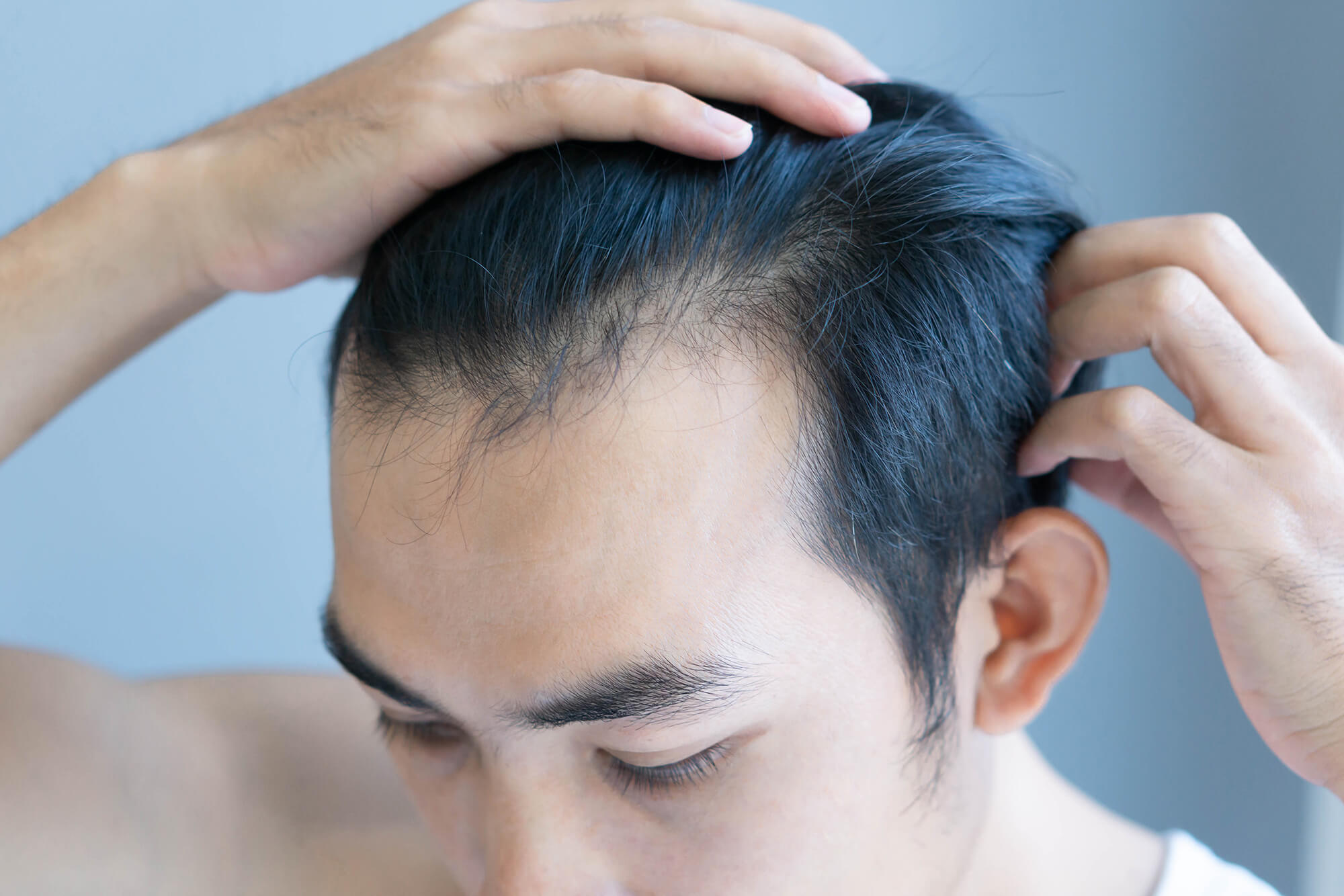Have the TikTok Hairline Check compilations got you concerned about your hairline? Don’t worry – you’re definitely not the only person who found themselves examining their hairline and the size of their forehead in the mirror after watching those videos.
The good news is that receding hairlines can be normal. Foreheads and hairlines change as people age. It’s perfectly normal to feel like your forehead is larger than it was when you were a kid: It is, but everyone else’s is too. As this occurs, it also results in your hairline moving further back along your head.
All hairlines change with age
If you look at pictures from when you were very young, you might notice that your forehead and hairline were virtually identical to every other child’s. According to a study in the Facial Plastic Surgery Clinics Of North America Journal, this is actually the case: All young children have similar concave hairlines.
If you still have any photos of your kindergarten class, you might be able to notice how children’s foreheads and hairlines start to change. You might even be able to pick out a few classmates who started to have widow’s peaks, for instance. These are still rare at this age, but widow’s peaks become much more common in children by the time they finish elementary school. Other hairline changes, like the formation of temporal peaks, typically start to appear in teenagers.

Defined widow’s peaks are more common in adults than children
Genetics and hormones define your hairline
Hairlines and foreheads change a lot between kindergarten and high school. Everyone starts out with a concave hairline, but this recedes into a flat or convex shape as boys enter their teen years.
The Facial Plastic Surgery Clinics Of North America Journal study says that these hairline changes are genetically and hormonally-driven. That’s part of the reason that people tend to see most of these changes occur during and after puberty.
Your final, mature hairline may appear by the time you’re 17, or might not fully develop until your late 20s. By the time your hairline finishes receding, you’ll often be able to see a few centimeters difference between your childhood hairline and final, mature hairline.

Concave hairlines, also known as juvenile hairlines, turn into mature, convex hairlines as people age
Hairstyles can also affect your hairline
While most hairline changes that occur are simply a normal part of development, external factors can also influence how much your hairline recedes. For example, tight, pulled back hairstyles, like those that involve cornrows or Ghana braids, are known for causing hair loss.
While the size of your forehead is mainly due to genetics, hairstyles like these can cause hair loss around the front of the head and temples, directly affecting your hairline. This type of hair loss is known as traction alopecia.
When is a receding hairline a sign of hair loss?
Receding hairlines aren’t only caused by traction alopecia. According to a study in the Journal of Cutaneous and Aesthetic Surgery, they’re also one of the first signs of the most common type of hair loss: androgenic alopecia. This condition is hormonally and genetically-driven. It can start to affect men as early as their late teens.
Receding hairlines can be very confusing – especially for men between their late teens and late 20s, who are wondering if they’re experiencing hair loss or are simply seeing their hairline mature. Hairline issues may be a sign of traction alopecia, androgenic alopecia, or another type of hair loss if your hairline is:
- Uneven
- Eroding in certain areas
- Fuzzy-looking, with different hair densities across the top and sides
- Receding in specific places – like your temples, or the top of the head but not the sides
- Substantially (more than a few centimeters) larger than it was in your youth
- Still increasing in size and you’re 30 years old or older
Any of these hairline issues in combination with other hair loss symptoms, like thinning hair or balding at the crown, is likely a sign of androgenic alopecia. This type of hair loss can result in baldness if left untreated. If you suspect you have androgenic alopecia, talk to your doctor to determine a treatment strategy that works best for you.
Can a receding hairline be corrected?
A receding hairline can definitely be corrected. However, in order to correct it successfully, you need to determine the reason why this hair loss occurred.
Solutions for hairlines affected by traction alopecia
Let’s say your receding hairline is due to traction alopecia. Maybe your parents really liked keeping your hair in braids when you were young. Your hairline today might be uneven, or might have eroded further back than you feel comfortable with. You might also feel self-conscious about the size of your forehead. If this is the type of receding hairline you’re hoping to correct, you won’t have any other symptoms of hair loss.
People with this type of receding hairline might want to have hairline lowering surgery. They may also want to consider cosmetic treatments, like scalp micropigmentation, to fill in any uneven or patchy regions. If the damage and hair loss is recent, you can also just wait for your hair to grow back. However, this is only an option for people who still have viable hair follicles.
Hairlines affected by traction alopecia may also have a lot of frizz or flyaways. If you’ve had these issues, you may want to consider improving your hair’s health by changing your diet or taking a supplement, moisturizing your hair regularly, and of course, avoiding all tight, pulled back hairstyles in the future.
Treatments for androgenic alopecia hairlines
In order to stop androgenic alopecia, you’d need to apply a specific FDA-approved treatment like minoxidil, take finasteride, or undergo low-level laser therapy treatments. There are also a variety of other treatment options you can try, like minoxidil shampoo or microneedling. However, these should be used in conjunction with an FDA-approved treatment for hair loss.
Hairline lowering surgery won’t work for someone with androgenic alopecia because this type of hair loss is progressive. There are other surgical alternatives though, like FUE (follicular unit extraction) and FUT (follicular unit transplantation).
When a receding hairline is corrected through one of these hair transplant surgeries, hair follicles are harvested from the back of your head and moved to the front. However, this procedure can be extremely costly. A report in the Skin Therapy Letter Journal stated that hair transplants can cost between $5,000 and $20,000 per session, and men who have let their hair loss progress often require more than one session.
Takeaway
Everyone experiences changes to their hairline as they age. Hairlines are regulated by genetic and hormonal factors, and typically start to recede during puberty. They can also be affected by the way you care for your hair, how you style it, and your overall health.
However, hairlines can recede further for various other reasons. Tight, pulled back hairstyles are a well-known culprit that can lead to hair loss at the hairline and increase the size of your forehead.
Receding hairlines are also a sign of androgenic alopecia. In this case, hair loss can be treated with minoxidil, finasteride, or low-level laser therapy. Hair transplants are also an option, but tend to be very expensive.





